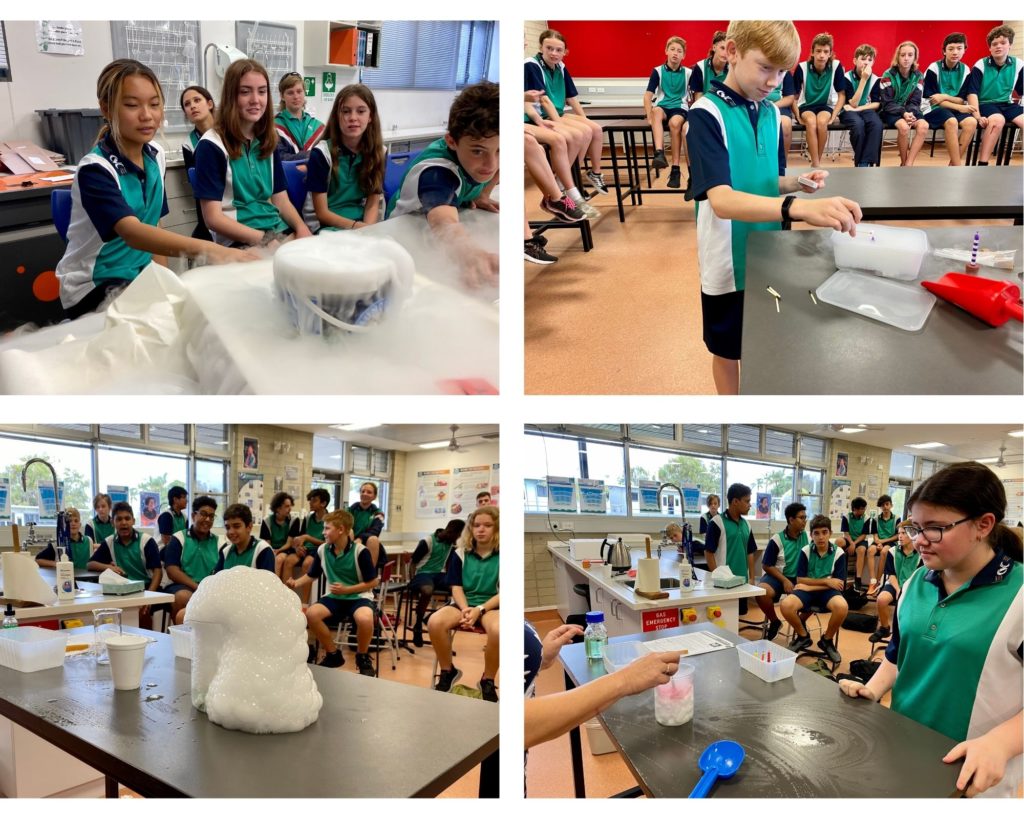
Today the Year 8 science classes had fun with experiments using dry ice. Students have been studying the properties of solids, liquids and gases and their changes of state. All of the experiments conducted were used to demonstrate the concepts of sublimation, which is the transition of a substance directly from a solid state to a gas state, in this case, dry ice to CO2 gas.
The balloon activity demonstrated that a small pellet of dry ice sublimes to produce a huge volume of CO2 gas – more than enough to easily fill a balloon, and that a balloon full of CO2 is much heavier than a similar balloon full of normal air. The students also observed a foaming activity which made use of the sublimation of CO2 to produce large amounts of foam – CO2 bubbles being trapped in detergent.
Another experiment, the tin can activity, demonstrated to the classes the expansion of CO2 to a much greater volume as it sublimes, exerting huge pressure on the can until it ‘blows’ the lid off, and then the candle experiment showed that CO2 is more dense than air and can be ‘poured’ in the same way as a liquid until it covers the flames and extinguishes it. CO2 is usually invisible but it can appear as a whitish colour due to it cooling and condensing the water vapour present in the air to produce a cloud.
Dry ice is frozen carbon dioxide, which as a gas makes up about 0.04% of the earth’s atmosphere. It is the gas that we exhale when we breathe, and the gas that plants use in photosynthesis. Carbon dioxide is also the gas that is added to make soft drinks. Dry ice is commonly used for freezing or keeping things frozen as it maintains a very cold temperature of -78.5 degrees. Instead of melting, dry ice turns directly into carbon dioxide gas and does not melt like common ice.
